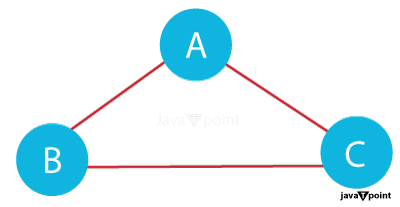Implementation of Graph in JavaScriptGraphsGraphs are flexible data structures that find use in many areas of computer science, from the complexity of social networks to the geographic details of mapping, and more. In the context of JavaScript, the utilization of graphs emerges as a very useful instrument for solving difficult challenges. Now we shall examine the fundamentals of incorporating graphs into JavaScript and examine the benefits they provide also clarify how they are used in real-world situations. Graphs in JavaScriptUnraveling the Enigma of Graphs in JavaScript Within the realm of JavaScript, a graph assumes the semblance of a conglomerate of nodes, denoted as vertices, interwoven through edges, akin to connecting threads. Each edge serves as the embodiment of a relationship or connection between the nodes. The versatility inherent in graphs bestows upon them the capability to model a kaleidoscope of scenarios, rendering them an invaluable asset within the realm of software development. Incorporating Graphs into JavaScriptThe incorporation of graphs into JavaScript and it's benefits:
Deconstructing the Foundational Elements of Graphs Prior to delving into the labyrinthine realm of JavaScript implementation, it is imperative to grasp the fundamental constituents of graphs: Structural Foundations of Graphs
Constructing a Graph within JavaScriptThe fabrication of a graph within the context of JavaScript manifests through a profusion of data structures, which encompass arrays, objects, or bespoke classes. Presented below is a simplified demonstration of a graph's instantiation through the employment of an adjacency list: Incorporating Nodes and Edges Following the instantiation of a graph, the subsequent step is to infuse it with nodes and edges. Nodes are emblematic of entities, while edges are the connective sinews that bind them together. For instance, in the landscape of a social network, nodes may embody individual users, with edges symbolizing their amicable connections. Let's see an example of a graph: Now we will use the graph class to implement the graph shown above: Graph Code in JavaScript:Output: A -> B,C B -> A,C C -> A,B A -> C B -> C C -> A,B B -> C C -> B 
Understanding GraphsTraversing a graph emerges as a pivotal operation, with two prevailing methodologies at one's disposal: depth-first search (DFS) and breadth-first search (BFS).
Delving into the Abyss with Depth-First Search DFS embarks on an intrepid journey along a branch, venturing as far as the terrain permits before backtracking. It frequently serves as the instrument for divining connected components concealed within the labyrinthine structure of a graph.
Breadth-First Exploration In contrast, BFS takes a systematic approach by scrutinizing all neighbor nodes residing at the current stratum before extending its purview to nodes ensconced within the subsequent stratum. It finds its frequent employment in quest of the shortest path amidst unweighted graphs. Embarking on the Implementation of Graph AlgorithmsJavaScript confers the flexibility to bring to fruition an array of graph algorithms, encompassing the quest for the shortest path, the identification of cycles, and the assessment of connectivity. These algorithms epitomize the quintessence of prowess in efficaciously tackling intricate problems. Instances of Real-World DeploymentThe application of graphs within the domain of JavaScript extends far and wide, with tangible real-world manifestations encompassing:
Challenges and Application.While harnessing the potency of graphs imparts a formidable advantage, it is crucial to heed certain challenges. Graphs can metamorphose into computationally demanding constructs when subjected to substantial datasets, mandating the optimization of performance. Enhancing Computational PerformanceThe strategic employment of optimization techniques, encompassing the surgical excision of extraneous branches and the judicious utilization of efficient data structures, effectuates a significant enhancement in the processing alacrity of graphs.
Next TopicK-D Tree in Data Structures
|
 For Videos Join Our Youtube Channel: Join Now
For Videos Join Our Youtube Channel: Join Now
Feedback
- Send your Feedback to [email protected]
Help Others, Please Share










